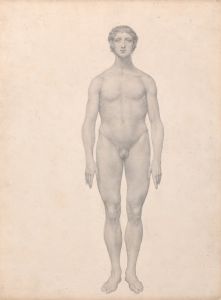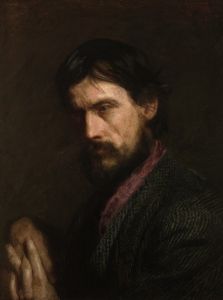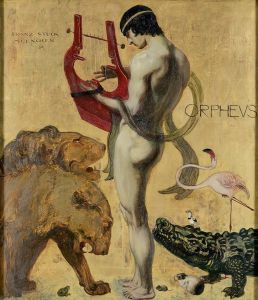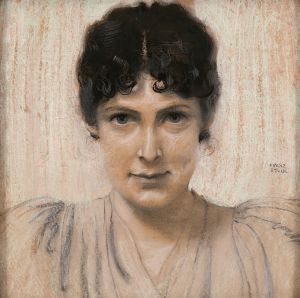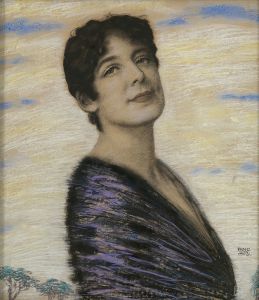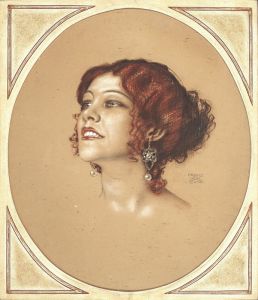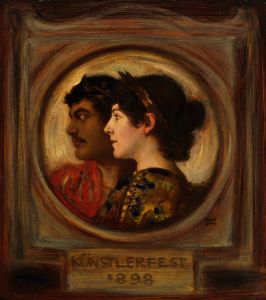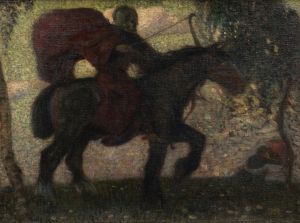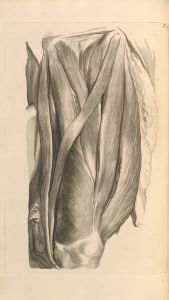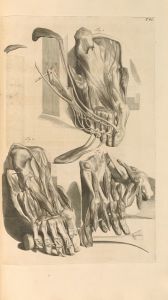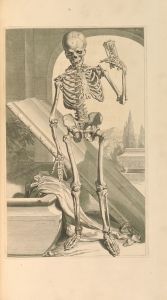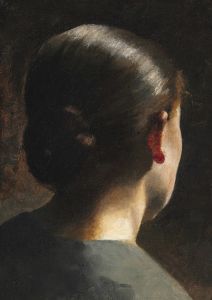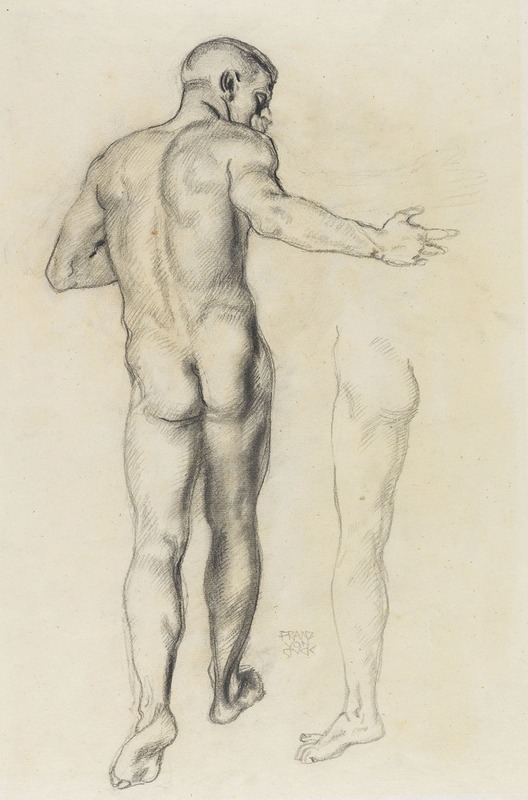
Männlicher Rückenakt
A hand-painted replica of Franz von Stuck’s masterpiece Männlicher Rückenakt, meticulously crafted by professional artists to capture the true essence of the original. Each piece is created with museum-quality canvas and rare mineral pigments, carefully painted by experienced artists with delicate brushstrokes and rich, layered colors to perfectly recreate the texture of the original artwork. Unlike machine-printed reproductions, this hand-painted version brings the painting to life, infused with the artist’s emotions and skill in every stroke. Whether for personal collection or home decoration, it instantly elevates the artistic atmosphere of any space.
Franz von Stuck's Männlicher Rückenakt (Male Nude from the Back) is a painting by the German Symbolist artist, who was a prominent figure in the Munich Secession movement. Known for his mastery of the human form and his exploration of mythological and allegorical themes, von Stuck created works that often emphasized dramatic contrasts, sensuality, and psychological depth. While Männlicher Rückenakt is not as widely discussed or documented as some of his other works, it reflects his skill in depicting the human body with a focus on musculature and form.
The painting portrays a male figure seen from behind, emphasizing the contours and strength of the human back. This approach aligns with von Stuck's interest in the idealized human form, a theme that recurs throughout his oeuvre. The composition is marked by a careful attention to anatomy and a subtle interplay of light and shadow, which enhances the three-dimensionality of the figure. The restrained color palette, typical of von Stuck's style, draws attention to the subject's physicality and the sculptural quality of the body.
Franz von Stuck (1863–1928) was a painter, sculptor, and architect who gained significant recognition during his lifetime. He was one of the founding members of the Munich Secession in 1892, a group of artists who sought to break away from traditional academic art and promote modernist approaches. Von Stuck's work often incorporated mythological and symbolic imagery, and he was particularly known for his depictions of the human figure, both male and female, in a manner that combined realism with an otherworldly quality.
While Männlicher Rückenakt is not among von Stuck's most famous works, such as The Sin (Die Sünde), it exemplifies his ability to convey the power and beauty of the human form. The painting likely served as a study or exploration of the male figure, a subject that was less commonly depicted in art at the time compared to the female nude. Von Stuck's treatment of the male body in this work reflects his broader interest in classical ideals and his engagement with the Symbolist movement's fascination with the human condition and its connection to myth and nature.
Due to limited documentation on this specific painting, further details about its creation, provenance, and reception remain unclear. However, it stands as a testament to Franz von Stuck's artistic legacy and his contribution to the evolution of modern art in the late 19th and early 20th centuries.





